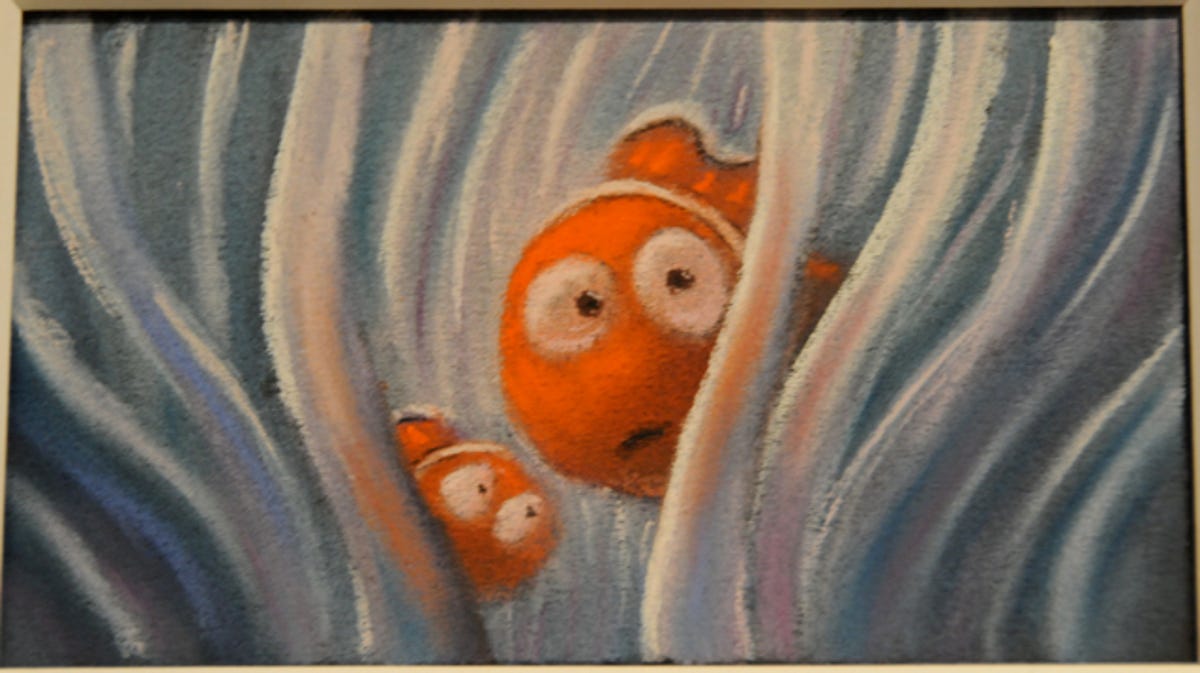25 years of Pixar's archives (photos)
Road Trip at Home: A traveling exhibit of the famed animation studio's artifacts finally comes home to the Bay Area.

Finding Nemo pastel
OAKLAND, Calif.--If one thing is clear in the film business, it's that there has never been a studio as reliably successful as Pixar Animation Studios. Over 25 years, Pixar has turned out 11 feature films, and every single one of them has been a commercial and critical hit.
Over those 25 years, Pixar has built up a gigantic archive of storyboards, sketches, models, videos, and much more; since 2005, an exhibit featuring hundreds of individual elements of that archive has been traveling the world, delighting thousands of people from New York to England to Japan to Australia, and beyond.
Now the exhibit, titled "Pixar: 25 Years of Animation," has come back to the Emeryville, Calif., studio's backyard. It is currently appearing at the Oakland Museum of California, and currently features 500 pieces, including some from Pixar's latest smash hit, "Toy Story 3."
But the show naturally also has all kinds of treats from each of the studio's previous 10 films: "Toy Story," "A Bug's Life," "Toy Story 2," "Monsters, Inc.," "The Incredibles," "Cars," "Ratatouille," "Wall-E," Pixar's award-winning short films, and, of course, "Finding Nemo."
This is a pastel painting by Ralph Eggleston from 2003's "Finding Nemo" entitled "Sequence Pastel: First day."
To infinity and beyond!
The Pixar story, at least in the popular imagination, began in 1995 with the release of "Toy Story," the first feature film ever done entirely with computer animation.
This is a pencil drawing of Buzz Lightyear, one of that film's stars, done by Bob Pauley. It is also the signature image for the museum exhibition.
Buzz model
'Toy Story' storyboard
Woody in pencil
Early Buzz Lightyear
Mr. Potato Head
Three of Woody and Buzz
Luxo Jr., and the ball
Flik model packet
Flik's harvester
The offering stone
Jessie
Jessie II
The Pixar storyboarding process storyboard
Sullivan in colored fur
Door Vault
More door vault
Scarefloor
Monsters, Inc. orientation
Anglerfish
Crush study
The Jumper
Lightning McQueen
Race Car color study
Mater
Ornament Valley
Luigi's Tire Shop
Remy in the kitchen
Remy on the Skylight rough sketch
Remy on the skylight layout
Django plans the heist
Wall-E
Eve firing gun
Plant storyboard
Wall-E colorscript
According to the exhibit, a colorscript "is artwork that visually supports the emotional content of an entire story through general color, lighting, and mood. It depicts the whole story in a chronological format that allows one to see the basic color structure to be applied to the entire film. The colorscript is one of the first opportunities to see the story as a whole. It is a low-resolution view that reveals the full emotional arc of the film. Colorscripts work because detail is removed and ideas are presented in their most concise form."
This is the colorscript for "Wall-E," a digital painting done by Ralph Eggleston.

